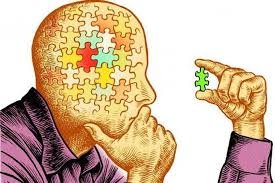Purpose is the reason you wake up every morning with energy and motivation. It goes beyond daily tasks or achievements and taps into something deeper—your unique contribution to the world. Just as companies like Nike, Google, and Amazon have clear, guiding purposes—like inspiring athletes, making information accessible, and providing books in an instant—leaders also need a purpose that acts as their "north star."
A well-defined purpose gives leaders clarity, focus, and resilience, especially when facing the unknown. Knowing your “why” not only enriches your life but also strengthens your impact as a leader, offering direction to navigate both personal and professional challenges.
Purpose Beyond Profit: Why Leaders Need a "Why"
Purpose shapes not only what you do but also how you do it. When you lead with purpose, you bring authenticity, passion, and consistency to your role. Simon Sinek’s “Start with Why” concept emphasizes that purpose is not simply a pathway to success; it’s what draws people to you and keeps them committed. People follow leaders who know why they lead, inspire, and create meaning.
A purpose-driven leader asks: Why should people follow me? Why should they stay engaged and motivated? When your actions consistently reflect your purpose, you foster trust, loyalty, and a shared commitment to something larger than individual tasks or goals.
Finding Purpose
1. The Ikigai Approach. The Japanese concept of Ikigai—a reason for being—offers a framework for finding purpose. Ikigai resides at the intersection of four spheres:
What you love
What you’re good at
What the world needs
What you can be paid for
Ikigai reminds us that purpose is more than a passion; it’s a balanced pursuit that incorporates skill, relevance, and contribution to the broader world. By aligning these four areas, you can find a fulfilling and sustainable purpose. For example, a leader who loves mentoring, is skilled at developing others, and understands the importance of building future leaders may find their purpose in guiding team members toward their highest potential. You can use this framework to identify your purpose. This exercise can clarify the unique intersection where your passion, skill, and contribution come together, offering a roadmap to purpose-driven leadership.
2. The Mastery Approach. Cal Newport’s So Good They Can’t Ignore argues that purpose often emerges from mastery. While passion is valuable, building rare and valuable skills can create a sense of purpose. Purpose isn’t always discovered overnight—it’s crafted through dedication, skill development, and a commitment to making a meaningful impact. By focusing on becoming exceptionally skilled in areas that matter, you lay the foundation for a purpose rooted in value and contribution. Taking time to develop rare and valuable skills can help uncover your purpose, as these competencies will strengthen your sense of impact and open new opportunities for meaningful contributions.
3. Reflect on Your “Why.” Begin by asking why you do what you do. What impact do you want to create? Reflect on moments when you felt most fulfilled and effective in your role. Identifying these experiences can reveal insights about your purpose.
Benefits of a Purpose-Driven Leadership Approach
1. Clarity in Decision-Making. Purpose acts as a compass, making it easier to identify priorities and stay aligned with long-term goals. Leaders who know their purpose are less likely to be swayed by distractions or quick fixes; instead, they make deliberate, impactful choices. As Lewis Carroll said, “If you don’t know where you are going, any road will get you there.” With purpose, leaders can confidently say “yes” to decisions that align and “no” to those that don’t.
2. Focus and Resilience. A clear sense of purpose provides strength during challenging times. Knowing your purpose helps you maintain focus, even when circumstances are difficult or outcomes are uncertain. This clarity reduces stress, allowing you to navigate obstacles with resilience and determination, ultimately benefiting you and those you lead.
3. Enhanced Engagement and Impact. Purpose-driven leaders inspire others to give their best because their actions reflect genuine commitment. Simon Sinek’s research has shown that people who enjoy going to work are more productive and creative and more positive in their interactions with colleagues and clients. When leaders operate purposefully, they create a workplace environment where others can find meaning and fulfillment.
4. Confidence and Authenticity. Purpose gives leaders an internal boost of confidence. When you know what drives you, you bring authenticity to your leadership, creating a positive impact that resonates with others. Purpose-oriented decisions feel aligned with who you are, allowing you to act assertively without aggression or passivity. This balance encourages others to trust and respect your leadership.
Purpose is the anchor that brings joy and fulfillment to everyday life, creating a leadership brand that’s both inspiring and impactful. Defining and living by your purpose isn’t a destination; it’s a journey that guides your actions, fuels your motivation, and enriches the lives of those you lead. Finding your purpose may take time and reflection, but the journey is worth it.
Reflection Question: “What is your “why” as a leader, and how can you begin to live that purpose more fully today? Comment and share below; we’d love to hear from you!
Quote: "The purpose of life is not to be happy. It is to be useful, to be honorable, to be compassionate, to have it make some difference that you have lived and lived well." — Ralph Waldo Emerson
The next blog in this series 3/4 will focus on having vision.
As a leadership development and executive coach, I work with leaders to develop their leadership brand, contact me to explore this topic further.
What’s your purpose?









